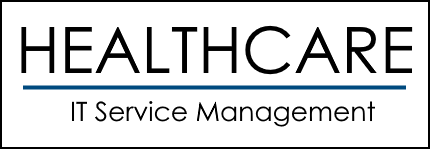Table of Contents
ToggleThe advent of the COVID-19 pandemic marked a significant shift in the global workspace. It necessitated a rapid transition from traditional office setups to remote working environments, prompting a new era of work that capitalized on the benefits of technological advances and globalization. As we move into this new age, starting a fully remote company, once considered a futuristic idea, is now a concrete reality for many businesses. However, as seamless as it may appear on the surface, establishing a fully remote company comes with its own unique challenges and considerations. This article aims to unravel these intricacies, exploring essential aspects such as recruitment, team administration, security measures, organizational culture, and performance evaluation.
Positives and Negatives of Remote Work
Advantages for employers:
- Expenses Decrease – Small business owners can save money on overhead costs by implementing a remote work environment. This eliminates expenses such as rent, equipment, furniture, office supplies, and utilities.
- Productivity increase – Employees are happier and more productive when they have shorter commutes and fewer office politics to navigate.
- A decrease in employee turnover rate – Replacing employees who leave your business can be a costly affair, not only in terms of the expenses incurred in hiring a replacement but also due to the loss of productivity. However, remote work can enhance job satisfaction, leading to increased employee retention rates.
- Expanded hiring pools – Business owners often face significant challenges when it comes to hiring, particularly when their options are restricted by location and operating hours. However, remote work overcomes these limitations and provides a broader range of candidates for business owners to choose from.
Advantages for employees:
- No commute – Many individuals dislike their commute due to traffic, while others fear getting sick from using public transportation. Not having to commute every day also saves you money. Not having to worry about gas, bus fees, and vehicle issues is a big financial help.
- Autonomy increases – When working remotely, employees typically enjoy greater autonomy in their work style. While there may be occasional Zoom meetings, for the most part, employees have the flexibility to choose how and when they complete their tasks.
Disadvantages for employers:
- Collaboration difficulties – One major concern about remote work is that it hinders collaboration. Many worry that without the ability to gather in a conference room and discuss ideas, innovation will be hindered. While this is a legitimate risk, it doesn’t have to be inevitable. Business owners can utilize video conferencing, instant messaging, and collaboration tools to ensure that collaboration remains strong.
- Team building issues – One of the factors that contribute to employee retention is the colleagues they collaborate with. They highly regard the sense of belongingness and being valued as a team member. However, establishing this feeling becomes more challenging when everyone is working remotely.
- You give up some control – For a while now, numerous entrepreneurs have been hesitant to adopt remote work settings because they would have to relinquish some authority. They would have to rely on their staff to complete tasks without the boss’s constant guidance. However, this shouldn’t be a concern if you have recruited the right employee.
Disadvantages for employees:
- Isolation – While remote work offers autonomy that is cherished by many employees, there are some who prefer additional guidance and the presence of colleagues. In fact, for individuals who live alone, working from home can sometimes be excessively isolating.
- Home and work life are blurred – To be successful while working from home, it is crucial to establish boundaries and know when to disconnect. It can be tempting to exceed the expected work hours when the distinction between personal and professional life becomes unclear. They may feel more pressured to prove their productivity and may take less time for family or self-care.
Building the Right Team for Remote Work
Recruitment forms the foundation of any organization, and in a remote company, this process acquires a unique global dimension. The hiring process has shifted from a local to a global landscape, with talent pools expanding beyond geographical boundaries. Online job boards, professional networks such as LinkedIn, and remote job platforms are indispensable resources for sourcing candidates. This shift not only widens the search field but also significantly intensifies competition, making the selection process even more crucial.
In remote work, qualities like self-discipline, time management, and effective communication carry greater weight. As such, these attributes should be assessed through behavioral interviews, personality tests, and even trial projects during the hiring process. A balanced mix of synchronous (real-time) and asynchronous (deferred) methods can help evaluate these attributes effectively.
Navigating Team Administration in the Virtual World
Administration in a remote setup entails more than just traditional management. Leaders must foster an environment of trust and openness, emphasizing clear, frequent, and transparent communication. This task can be challenging when team members are spread across different time zones and cultural contexts.
Companies must rely on a variety of digital tools to streamline work processes and facilitate communication. Tools such as Slack, Asana, or Trello can help in project management, while Zoom or Microsoft Teams can aid in video conferencing. Regular check-ins and team meetings should be part of the routine, providing opportunities to discuss ongoing projects, brainstorm new ideas, and address any concerns or issues.
Performance monitoring in a remote setup should focus more on outcomes rather than time spent working. KPIs become a pivotal tool in this process, helping measure effectiveness, efficiency, and engagement. Project completion rate, quality of work, client satisfaction, and response times are common KPIs that can be used.
Additionally, KPIs related to remote work, like engagement in virtual meetings, promptness in communication, and adherence to schedules, can provide valuable insights. Feedback sessions should complement these metrics to give context to the numbers and facilitate two-way communication.
Securing your Remote Company
As businesses pivot towards remote operations, securing data and maintaining cybersecurity become paramount. The virtual nature of remote work presents new challenges, transforming the cybersecurity landscape significantly. Companies must establish a comprehensive strategy that includes robust policies, ongoing training, technical defenses, and regular audits to protect sensitive data and IT infrastructure.
The first step in fortifying your remote setup involves educating employees about cybersecurity best practices. Employees are often the first line of defense against cyber threats, making it essential that they can recognize and respond effectively to common risks. Regular training sessions should cover basics such as identifying phishing scams, using strong, unique passwords, and protecting sensitive data. It’s also important to develop a protocol for reporting suspected security breaches to ensure rapid response.
However, it’s not enough to rely on human defenses alone; robust technical measures are also crucial. Implementing a Virtual Private Network (VPN) is an effective way to protect data in transit, encrypting it and making it much harder for cybercriminals to intercept. Moreover, all devices used for work should have updated antivirus software and firewalls.
Implementing Authentication
Authentication is another essential security measure. Implementing multi-factor authentication (MFA) provides an additional layer of security, ensuring that only authorized individuals can access sensitive information. MFA requires users to provide two or more verification factors to gain access to a resource such as an application, online account, or a VPN.
Using the Cloud for Data Storage and Backup
Secure cloud services should be employed for data storage and backup. These platforms typically have built-in security measures and offer disaster recovery options if data loss occurs. It’s critical to choose reputable providers who prioritize security and have a proven track record.
Encrypting Sensitive Information
Additionally, consider encrypting sensitive data both in transit and at rest. Data encryption converts your information into an unreadable format, which can only be decoded with the correct decryption key. This method adds an extra layer of protection, keeping your data safe even if it falls into the wrong hands.
Regular Cybersecurity Audits
Finally, cybersecurity is not a set-it-and-forget-it endeavor; it requires consistent vigilance. Regular audits and vulnerability assessments can identify potential weaknesses in your defenses, ensuring that you are always a step ahead of potential threats. Cybersecurity is an ongoing process of improvement and adaptation in the face of constantly evolving threats.
As companies shift to fully remote operations, robust cybersecurity practices are not just a necessity, but a responsibility. A single breach can have severe financial and reputational repercussions. But with a comprehensive strategy in place, businesses can securely navigate the remote work landscape and protect their most valuable assets.
Remote work inherently exposes companies to a new range of cybersecurity risks. Therefore, a robust and comprehensive security policy is non-negotiable. The first line of defense is ensuring that all team members understand the basics of safe internet practices and are aware of common threats such as phishing scams. Regular training and updates on cybersecurity can go a long way in protecting your business.
Cultivating a Robust Organizational Culture
As the traditional physical workspace transforms into a virtual one, maintaining the human touch becomes the most critical challenge and opportunity for fully remote companies. The human element—fostering connections, building camaraderie, cultivating empathy, and maintaining morale—is the heart of a productive and fulfilling remote work experience. Creating a strong and inclusive organizational culture remotely requires conscious, sustained efforts that go beyond work-related communication and transactions.
In a remote setting, we lack the incidental, informal interactions that naturally occur in a physical office—quick catchups at the water cooler, lunch outings, or after-work socials. To replicate these interactions, companies must intentionally carve out spaces and opportunities for casual conversation and socialization. This could involve creating chat channels dedicated to non-work topics, organizing virtual coffee breaks, or hosting online game sessions. These activities give team members the opportunity to build relationships on a more personal level, fostering a sense of belonging and camaraderie.
Celebrating achievements and milestones is another important aspect of maintaining the human touch. Recognizing birthdays, work anniversaries, or project successes not only makes individuals feel valued but also reinforces the team spirit. These celebrations can be adapted to the virtual environment through group video calls, personalized messages, or digital gift cards.
Furthermore, fostering a culture of empathy and understanding is crucial in a remote setup. Each team member is working from a unique environment, with distinct challenges. Some may be juggling work with childcare, while others might be grappling with isolation. It’s essential to create a supportive atmosphere where individuals feel comfortable sharing their experiences and challenges. Regular check-ins and open conversations can help leaders understand these individual situations and make necessary accommodations.
Promoting work-life balance is another significant aspect. The line between personal and professional life can blur in a remote work context, leading to overwork or burnout. It’s crucial to encourage employees to set clear boundaries and respect their personal time. This could involve implementing ‘no meeting’ days, discouraging after-hours communication, and ensuring team members take regular breaks and time off. Giving employees a voice and involving them in decision-making processes fosters a sense of ownership and unity. Regular town hall meetings or feedback sessions can provide a platform for team members to voice their ideas, concerns, and suggestions, reinforcing the idea that every voice matters.
The human touch is the lifeblood of a strong organizational culture in a fully remote company. As we navigate this digital age, we must remember that at the heart of every business are people—with their unique experiences, emotions, and aspirations. By intentionally fostering connections, celebrating achievements, promoting empathy, and maintaining balance, companies can cultivate a thriving culture that fuels both individual and organizational success in the remote work landscape.
Transitioning to a Fully Remote Company Can Lead to Growth
In conclusion, transitioning to a fully remote company is a complex process, with many factors at play. However, with a strategic approach to recruitment, administration, security, culture, and performance evaluation, businesses can successfully navigate this transition. While the challenges are real, so are the opportunities for growth, innovation, and global reach. Embracing these changes, companies can pioneer a future of work that values flexibility, inclusivity, and productivity in equal measure.

With over 16 years in the industry, Jameson Lee has honed his skills in IT management, project execution, and strategic planning. His ability to align technology initiatives with business goals has consistently delivered remarkable results for organizations across various sectors.
Jameson’s educational background includes an Associate of Applied Science degree in Computer Networking Systems, providing him with a solid foundation in technical concepts and best practices. Complementing his technical acumen, he has also completed coursework in Business Administration, equipping him with a well-rounded understanding of the operational aspects of running successful businesses.
Driven by a commitment to staying ahead of industry trends, Jameson actively pursues professional certifications and continuous learning opportunities. His credentials include CompTIA A+, N+, and Security+, along with MCP and MCTS certifications. This dedication ensures that he remains at the forefront of technological advancements, enabling him to offer innovative solutions to complex challenges.
What sets Jameson apart is his personable approach to working with clients. He believes in fostering strong relationships and effective communication, collaborating closely with stakeholders to understand their unique needs, and provide tailored technology solutions. By building trust and understanding, Jameson ensures that every project is aligned with the client’s vision and objectives.
Throughout his career, Jameson has successfully led teams and implemented robust frameworks to optimize performance and achieve remarkable technological initiatives. Whether it’s streamlining operations, enhancing cybersecurity measures, or implementing cutting-edge software solutions, Jameson has consistently delivered tangible outcomes for his clients.
As a trusted IT partner, Jameson’s mission is to empower businesses with technology solutions that drive growth, efficiency, and competitive advantage. With his expertise, dedication, and personable approach, Jameson Lee is the catalyst for transforming your business through the power of technology.




